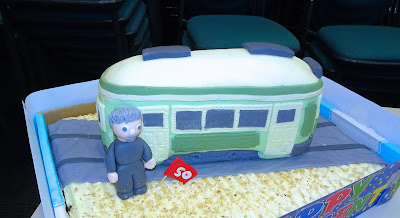Tourism
in overdrive
A recent stopover at the Moeraki Boulders, a natural
Otago feature, had me wondering. It was not my first visit but this one was
different. The reason, the unexpected swarm of people. On previous visits I
would certainly see others. But I could also have the beach almost to myself
and immediate companions. Previous visits had us parking near the beach then
walking for 10 to 15 minutes to see the amazing boulders strewn along the tide
line. They looked like remnants from a game of bowels played by giants who,
becoming bored, had sauntered off.
O this recent occasion, we missed the familiar car park
and, instead, followed signs that landed us at a large souvenir venue with a
café and bar. To use the short track to the beach we were asked to pay $2 each.
The amazing natural feature usually attracts 300,000 visitors annually.
TripAdvisor reviews frequently give Moeraki Boulders minimum points. ``It is an
attraction over-run with teenagers and Asians intent on taking selfies.’’
Maori mythology tells us the boulders were baskets
carrying kumara. They were aboard the sailing canoe Arai-te-uru when it was wreaked along the southern South Island coast.
Such curiosities of nature are found on beaches in
several New Zealand locations.
The Moeraki boulders, however, are the best
known. Complementing Maori mythology is science, telling us the Moeraki Boulders
are concretions created by the
cementation of the Paleocene mudstone of the
Moeraki Formation, from which they have been exhumed from embankments by
coastal erosion. The main body of the boulders started forming in what was then
marine mud, near the surface of the Paleocene sea floor. This is demonstrated
by studies of their composition; specifically the magnesium and iron content,
and stable isotopes of oxygen and carbon. Their spherical shape indicates that
the source of calcium was mass diffusion, as opposed to fluid flow. The larger
boulders, two metres in diameter, are estimated to have taken up to five million
years to grow while 10 to 50 metres of marine mud accumulated on the seafloor
above them. After the concretions formed, large cracks known as septaria formed
in them. Brown calcite, yellow calcite, and small amounts of dolomite and
quartz progressively filled these cracks when a drop in sea level allowed fresh
groundwater to flow through the mudstone enclosing them.
Amazing.
I
am not anti-tourism. I have worked for a vibrant tourist attractions company
and have been a long-time travel writer. I also travel a lot myself. I
appreciate the interchange of cultures having many beneficial add-ons. One
would be enhancing world peace. Travellers of varied ethnic origins get on well
together in backpackers, for example.
New
Zealand attracts $39.1 billion annually from tourists. (2018 stats.) Tourists
contribute $3.7 billion in GST alone. The industry employs 216,012 people.
That’s eight per cent of the workforce.
Have
we opened the gates too wide on tourism? Certainly tourism is great for
business operators who put hands up for further expansion. But can our
infrastructure, not to mention a fragile environment, cope with the numbers.
Centres such as Queenstown, for example, have become too expensive for local
people to live in. Those who need to
work in tourism frequently can no longer afford to live where tourists go.
The
question is, when is enough enough? How long do we turn a blind eye to our
burgeoning tourism reality?
Last
year I visited Iceland, a small country where tourism has lifted the country
from the mire of a drastically failing economy. Iceland is sadly experiencing a
negative impact on the environment and the cost of living.
A
marketing manager colleague working in a large Switzerland attraction tells me
numbers are not a problem to infrastructure or environment but it is a situation
being monitored.
In
the meantime I recall growing up, thanks to my parents, with a love for New Zealand’s
natural environment. I remember an early edition of a National Park hand book
imparting the ideals of music in solitude and magic in silence.
Despite
the crush of humanity, I did enjoy my recent Moeraki Boulders visit. It was the
ideal digestion to a sumptuous lunch at nearby Fleur’s Place.










